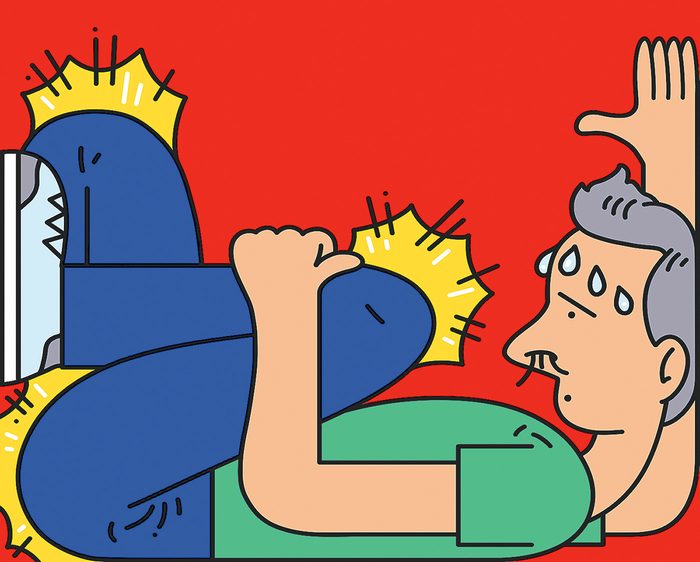Sure, the Human Body is a Miracle of Evolution—But I’d Still Give It a Few Tweaks

Shouldn’t the hard-working parts—the hips and knees—be made from something a bit more durable?
My body is nearly perfect. Well, not only mine–yours, too. Consider, for one thing, how your fingernail is tough enough to scrape off the blackened residue from the bottom of an enamel pot, yet soft enough that it doesn’t leave a scratch. Despite many decades of work by the manufacturers of scouring pads, brushes and sponges, no other material has been found that so perfectly performs this simple task.
The human body has been getting a bad rap lately. Covid-19 owes much of its power to the body’s occasional tendency to do battle with itself. The coronavirus can set off what’s called a cytokine storm, a sometimes-fatal overreaction of the immune system. In the effort to repel the invading army, the body blows up its own munitions dump.
So in times like these, it might be worth remembering all the ways that, most of the time, the body does a tip-top job.
For example, your nose is full of tiny hairs that catch dust in the air before it enters the lungs. Your throat rarely malfunctions, even though it’s required to do unlikely double-service as a highway for both air and food.
Or consider this piece of genius engineering: The human forehead produces a sheen of moisture on a hot day in a way that helps the body shed heat. The hotter you get, the more sweat you produce. Clever, right?
As Bill Bryson notes in his book The Body: A Guide for Occupants, it is estimated that between one and five of your cells turn cancerous every day. And nearly every time, your immune system locates and kills them. As Bryson puts it: “Our bodies are a universe of 37.2 trillion cells operating in more or less perfect concert more or less all the time.”
Some things, I admit, are not ideal. Take the fact that an adult male of normal proportions will, when run at by a toddler, find that his genitals are at the perfect height for a high-speed collision. If done with sufficient vigour, the impact may even prevent the creation of further children. As sibling rivalries go, that’s not a bad effort.
The arrival of pimples during adolescence also remains a mystery. First of all, do they have to appear on the face, the most visible part of the body? Couldn’t the body choose somewhere out of the way, like the backs of the knees? And why do outbreaks arrive at the exact moment we first become interested in matters of romance? Why can’t we get the pimples over and done with when we’re 10 years old and don’t yet care about our appearance? Or why can’t they wait until we’re 90, when many of us once again don’t care?
If I were an engineer overseeing the evolution of the body, I’d have also spent more time choosing some of the materials. Shouldn’t the hard-working parts—the hips and knees—be made from something a bit more durable? And is it wise that the mouth is responsible for so many crucial tasks—eating, breathing and speaking?
All the same, we should be grateful for what we have. How wonderful it is that our hair grows at the rate of approximately one centimetre per month—fast enough to keep hairdressers in business, but slow enough that both hairdresser and client have something new to talk about when they meet.
And I don’t know where we would be if someone hadn’t thought to equip the human body with a bottom. As Australian writer Tim Winton established in his children’s book The Bugalugs Bum Thief, human beings without backsides can’t sit down; they lower themselves onto a chair and simply slide off.
Plus, without a bottom, we’d be on our feet all day, leaving us too tired for the things that all humans should find time to do—sing a song of praise to the body and all the things it (normally) does for us.
Next, if you’ve ever had a colonoscopy, you’ll relate to this woman’s hilarious story.






